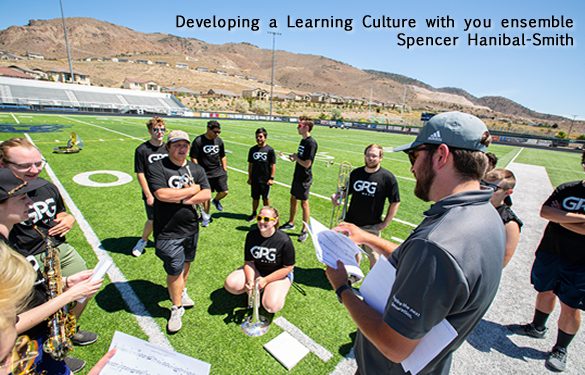Developing a Learning Culture with your Ensemble—Spencer Hannibal-Smith
Developing a learning culture in your ensemble is essential for individual student musical and performance growth. Too often, ensembles just play and repeat music passages, scales, drill moves, or exercises with no clear feedback other than “good, do it again.” Students get into a “musical rut,” which can affect their engagement thus simply going through the motions. Altering the delivery of material and information will keep your students more engaged in the rehearsal and will provide more purpose to the focus of the rehearsal.
Constructive feedback delivered in a positive manner is imperative for developing young musicians. The old phrase “that was wrong, do it again!” should be changed to “that was incorrect, how can we make that better?” Putting more responsibility on your students to think about how they can improve an aspect of their performance makes them better, more independent musicians. If your group cannot answer the question of “How can we make that better?” you have just created a teaching moment.
Here are some tips to helping your students become more independent and mature musicians:
- Ask your ensemble key questions that will lead your students to achieving a higher level of performance Specific questions such as: “Was that in tune?” “Was that in time?” “Did we all release together?” “Could you tell who is playing the melody there?” will help your students think more deeply about their own performance and how their part fits in with the rest of the ensemble.
- Listen to each other. Have half of the group listen to the other half perform a segment of music/exercise/scale/marching exercise, then lead the class through a constructive discussion about the positives and negatives of the performance. Always acknowledge something they did well!
- Record your ensemble. Select a portion of the piece or visual phrase you are working on and record it to then play back for the class in the same rehearsal. Pause the recording when you notice there was something off about the performance and begin a discussion with the class about what they heard/saw.
- Challenge students to listen to each other while performing and describe what they hear, both positive and negative.


